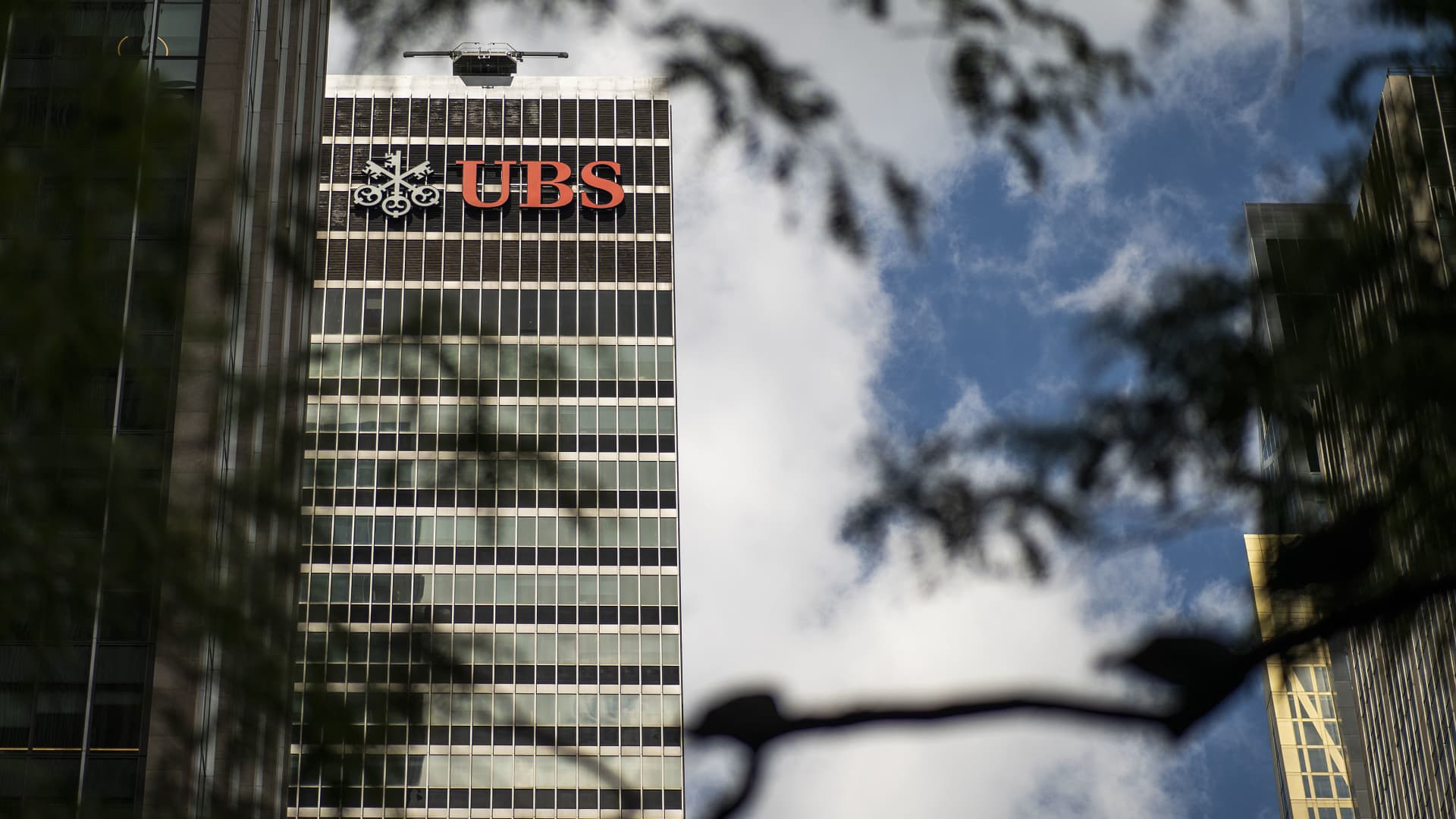The UBS building in Manhattan, New York City, presents a dynamic and modern view.
Eduardo Munoz Alvarez | View Press | Corbis News | Getty Images
UBS reported a strong second-quarter profit of $28.88 billion, following its acquisition of Credit Suisse. Analysts had projected a net profit of $12.8 billion, making this a significant beat.
The impressive figure primarily reflects $28.93 billion in negative goodwill relating to the acquisition. UBS’s underlying profit before tax, excluding negative goodwill, integration-related expenses, and acquisition costs, stood at $1.1 billion.
Negative goodwill accounts for the fair value of assets acquired in a merger beyond the purchase price. UBS paid a discounted $3.4 billion to acquire Credit Suisse in March.
According to UBS CEO Sergio Ermotti, the bank is making substantial progress with its integration plans. He stated that the negative goodwill represents the necessary equity to support $240 billion of risk-weighted assets and to facilitate the extensive restructuring required at Credit Suisse.
“Credit Suisse has outstanding people, clients, and product capabilities, but its business model was no longer sustainable and needed to be restructured,” said Ermotti.
Other highlights from the report include:
- CET 1 capital ratio, a measure of bank liquidity, reached 14.4%, up from 14.2% in the second quarter of 2022.
- Return on tangible equity (excluding negative goodwill, integration-related expenses, and acquisition costs) was 4.3%.
- CET1 leverage ratio was 4.8%, compared to 4.4% a year ago.
Full Integration of Credit Suisse’s Swiss Bank
UBS announced that it will fully integrate Credit Suisse’s domestic banking unit, merging the legal entities by 2024. This move comes after speculation that UBS could spin off and float Credit Suisse’s flagship Swiss bank in an IPO.
Ermotti emphasized that the integration is the best outcome for UBS, its stakeholders, and the Swiss economy. However, there might be concerns in Switzerland due to the potential loss of jobs during the process.
The acquisition of Credit Suisse was part of an emergency rescue deal overseen by Swiss authorities in March. UBS recently terminated a loss protection agreement and liquidity backstop put in place by the Swiss government, solidifying its control over Credit Suisse.
Ermotti assured that the integration will maintain the high level of service and offerings for clients, leveraging UBS’s strengthened capital base to maintain lending exposures while exercising risk discipline.
The bank aims to achieve gross cost savings of at least $10 billion by 2026, upon the completion of the integration of all Credit Suisse Group businesses.
UBS delayed the release of its second-quarter results to finalize the Credit Suisse takeover. In the previous quarter, UBS faced a significant drop in net profit due to a litigation issue related to U.S. mortgage-backed securities.
Despite these challenges, UBS shares have seen a nearly 30% increase since the beginning of the year.
In a separate filing, Credit Suisse reported a second-quarter net loss of 9.3 billion Swiss francs, with net asset outflows of 39.2 billion Swiss francs and a 3% decline in assets under management. This reinforces the challenges faced by the bank and the work that lies ahead for UBS in retaining and satisfying Credit Suisse clients.
UBS CEO Ermotti acknowledged the ongoing attrition but highlighted a slowdown in the outflow rate and an uptick in deposit inflows for both UBS and Credit Suisse in the second quarter. This indicates that clients are displaying loyalty and confidence in the merged entity.
UBS recorded net inflows into deposits of $23 billion for the combined group, with $18 billion attributed to Credit Suisse’s divisions. Furthermore, UBS’s flagship global wealth management business experienced the highest second-quarter net inflows in over a decade, with $16 billion in net new money.
While Credit Suisse’s outflows have slowed, UBS acknowledges the challenge of regaining the lost assets and aims to restore as much as possible.
Denial of responsibility! VigourTimes is an automatic aggregator of Global media. In each content, the hyperlink to the primary source is specified. All trademarks belong to their rightful owners, and all materials to their authors. For any complaint, please reach us at – [email protected]. We will take necessary action within 24 hours.


